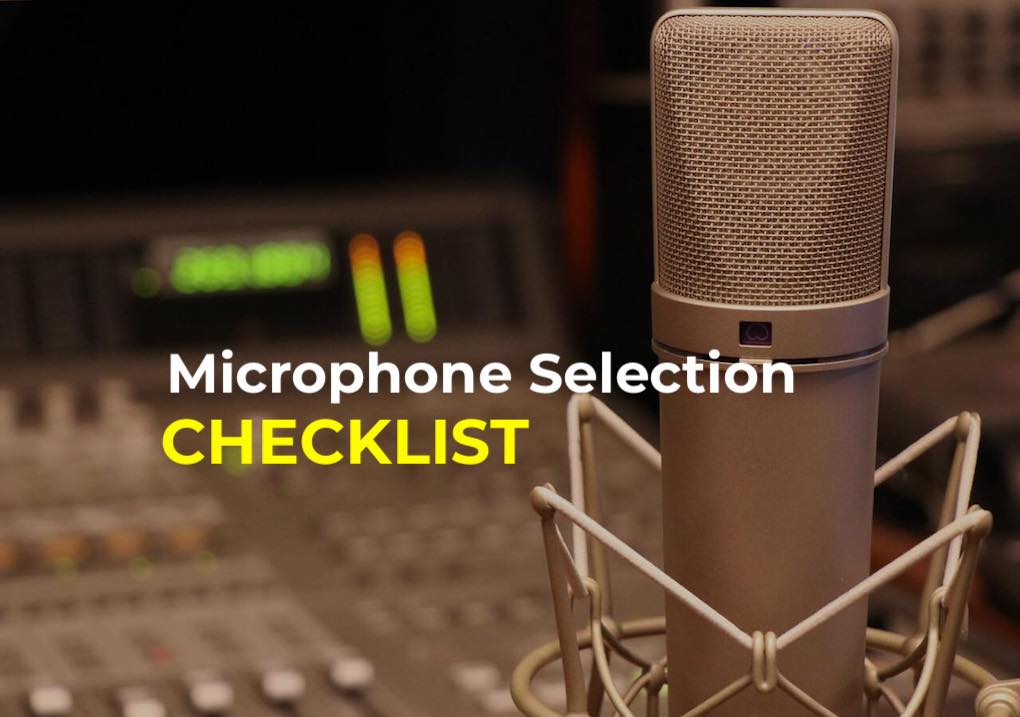- in Production by Bobby Owsinski
Choose The Right Microphone With This Microphone Selection Checklist
I’ve posted this before but I still get this same question on a regular basis – “What microphone should I buy for my vocals?” The expectation is that I’m going to say, “Definitely buy XYZ because it’s going to make you or your clients sound like a million bucks!”, but unfortunately things are never that cut and dried. Regrettably there’s no single mic available (especially on the inexpensive side) that will work like a champ on everything, which is why you might find the following microphone selection checklist from the 5th edition of my Recording Engineer’s Handbook especially useful.

All microphones are not created equal, and for that reason each one should be selected to fit the instrument or vocal.
- Did you select a microphone that compliments the instrument that you’ll be recording? For instance, if you have an instrument that has a very edgy top end, choose a mic that with the opposite quality so those frequencies won’t be emphasized. In the case of an instrument with a lot of transients (like a triangle or tambourine), dynamic mics often work better than condensers.
- Did you select a mic that won’t be overloaded by the source? You wouldn’t want to put a ribbon mic or many condensers on a snare drum with a heavy hitting drummer, for instance.
- Did you choose the right polar pattern for the job? If leakage is a consideration, then choose a mic with the narrow directional capabilities for the job. If a mic is flat on-axis, it will roll off the highs when it’s 90 degrees off-axis. If it’s flat 90 degrees off-axis, it will have a rising high end when it’s on-axis. You might also consider a figure 8 pattern for its high rejection to sound on its sides.
- Did you listen to all polar pattern positions? On a multi-polar pattern microphone, sometimes the best sound comes from a pattern that you wouldn’t expect, like omni or figure 8.
- Is proximity effect an issue? If close-miking, will the bass buildup from proximity be too much? If so, consider a microphone with an omnidirectional pattern.
TIP: The best or most expensive mic that you have available may not be the best on a particular voice or instrument. Always be prepared to try several different types of mics.
This microphone selection checklist may not cover all contingencies, but you might be surprised at the results if you follow it.
You can read more from The Recording Engineer’s Handbook and my other books on the excerpt section of bobbyowsinski.com.

